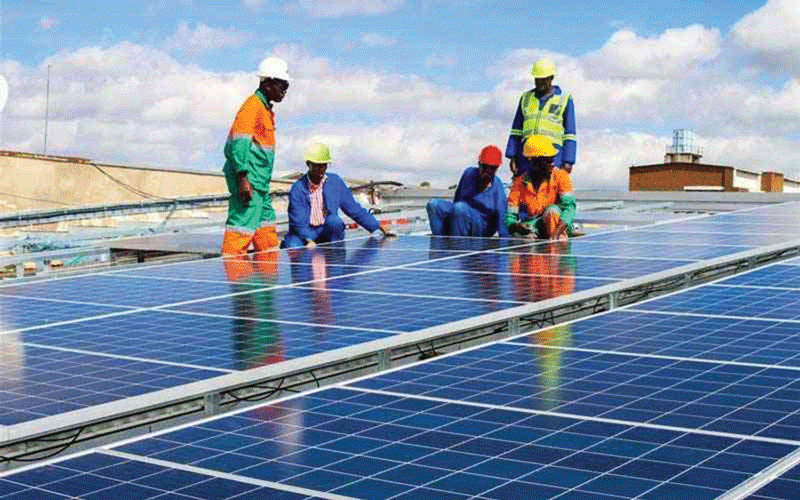
Energy is the lifeblood of any modern economy, and in Zimbabwe, it is the foundation upon which our developmental aspirations rest.
However, the persistent energy deficit continues to undermine industrial productivity, economic growth, and the quality of life for millions.
It is now more urgent than ever to bridge the existing energy gap through inclusive, strategic, and well-coordinated public-private partnerships (PPPs).
As I have long emphasized, energy transformation is not a solo endeavor. It is a national imperative, a shared responsibility that calls for collective action from both public institutions and the private sector.
By fostering a collaborative ecosystem, we can unlock the innovation, capital, and technical expertise that are essential to turning Zimbabwe into a regional energy powerhouse.
Accelerating the renewable energy transition
Zimbabwe has set its sights on increasing renewable energy to 65% of the national energy mix by 2030.
This is not only ambitious but also achievable.
- Mavhunga puts DeMbare into Chibuku quarterfinals
- Bulls to charge into Zimbabwe gold stocks
- Ndiraya concerned as goals dry up
- Letters: How solar power is transforming African farms
Keep Reading
Wind and solar energy technologies offer the advantage of rapid deployment, and with falling costs globally, they present a compelling case for large-scale adoption.
For a country with a rapidly growing population, renewable energy offers a cost-effective and scalable solution to meet rising demand.
However, the transition must be smart and resilient.
As we expand solar and wind capacity, we must also plan for grid stability by incorporating baseload backup power.
Supporting the government's Energy Compact
The government’s Energy Compact is a commendable step toward modernizing Zimbabwe’s energy infrastructure. It promises to enhance grid reliability, reduce electricity costs, and expand access, especially for underserved communities. This initiative deserves full support from all stakeholders.
To achieve these outcomes, we need a diverse portfolio of clean energy companies to actively participate in the sector.
Their involvement will not only inject innovation and competition but also strengthen the role of state utilities in long-term transmission planning, especially in scenario development and cost allocation.
The role of small modular nuclear reactors
While we embrace wind and solar energy, we must also be mindful of their intermittent nature.
Without backup, these sources can contribute to grid instability, especially during periods of low generation.
This is where small modular reactors (SMRs) come in as a strategic solution.
SMRs offer rotational inertia, vital for grid stability, and have a lifespan of up to 60 years, compared to 20–25 years for most wind turbines.
Investing in SMRs ensures that Zimbabwe has a reliable, long-term energy foundation while pursuing a sustainable energy future.
Reimagining our energy ambition
Zimbabwe's current ambition of reaching 4,000 MW of installed capacity by 2030 is commendable, but it is modest about our potential and needs.
If we are to become an energy exporter by 2030, we must aim higher.
We need a five-digit megawatt ambition that aligns with our strategic geopolitical and economic goals.
The current regulatory environment has become increasingly investor-friendly, which positions Zimbabwe as an attractive destination for large-scale energy investments.
We must now deploy the right tools and instruments to build investor confidence and unlock financing for transformative projects.
Electrifying lives: The Africa Energy Compact vision
Under the broader Africa Energy Compact, the goal is to electrify over six million people continent-wide by 2030.
Zimbabwe has set its own target of powering 600 000 households by 2030 and 1,2 million by 2035.
These goals are both urgent and achievable, but only if we accelerate implementation and remove bottlenecks that hinder progress.
Diversification and climate-resilient infrastructure
Zimbabwe must diversify its energy sources to reduce over-reliance on any single technology or resource.
Hydropower, solar, wind, biomass, geothermal, and nuclear must all have a seat at the table.
Diversification ensures energy security, cost stability, and environmental sustainability.
In tandem, we must invest in climate-resilient infrastructure such as flood defenses, robust transmission systems, and sustainable building codes to ensure that our energy systems can withstand the increasing impacts of climate change.
The time to act is now
The journey toward a reliable, affordable, and sustainable energy future for Zimbabwe starts today, not tomorrow.
The construction of a better energy infrastructure must be treated as a national priority, a mission that transcends partisanship and bureaucracy.
Let us harness the power of partnerships. Let us set bold ambitions. Let us invest in the future of our country, our people, and our planet.
- Dr Engineer Edzai Kachirekwa is an energy thought leader and infrastructure development advocate. Email:edzai@powergiants.co.zw






